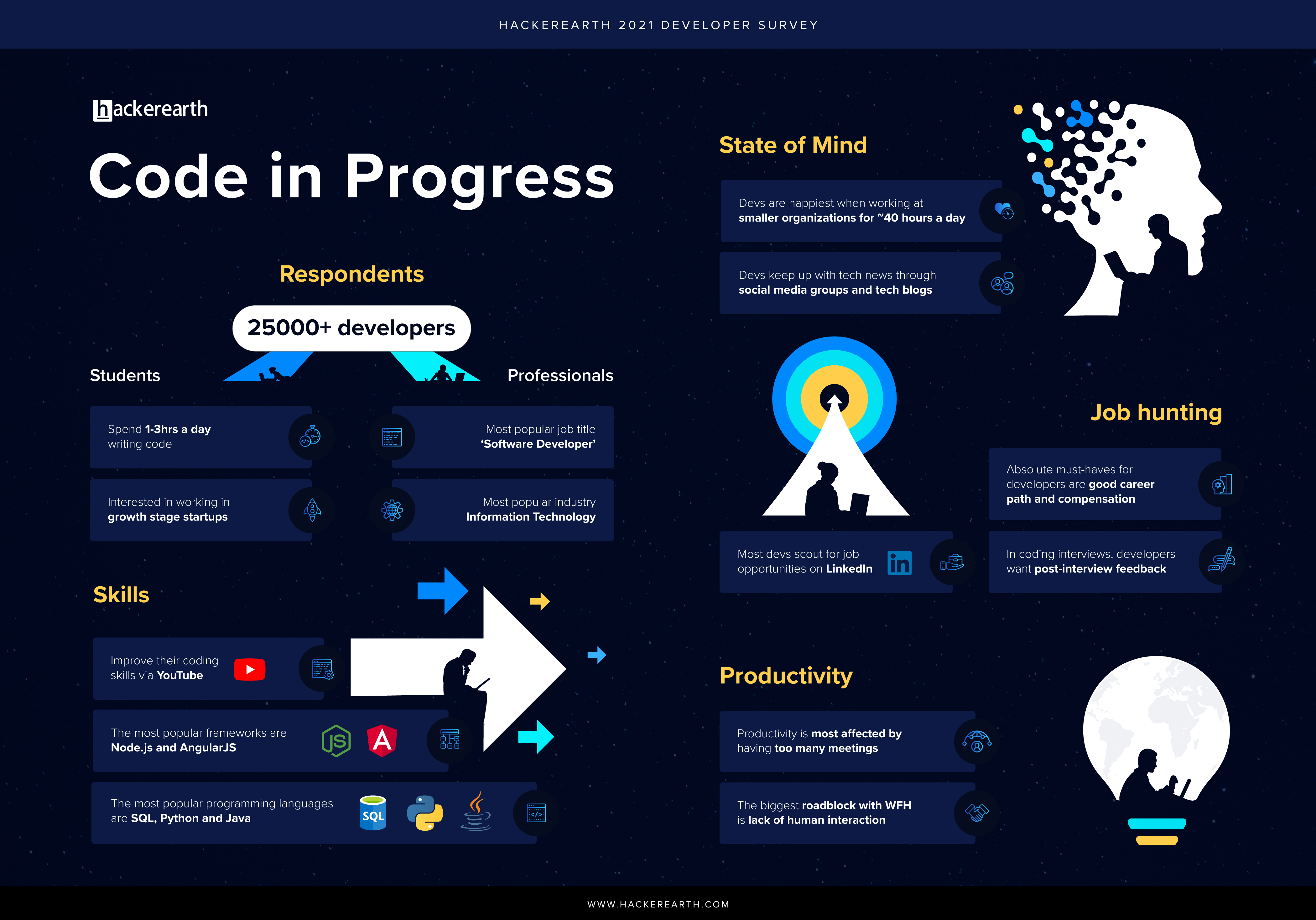We put together a list of top recruiting software platforms tech recruiters, HR can use, in no particular order.
Best Recruiting Platforms are
- HackerEarth (Coding Assessments)
- Dice (Open Web)
- Codility
- HireVue
- Pymetrics
- People Search (Workable)
- The Predictive Index
- Devskiller
- Hired
- Glider.ai
HackerEarth (Coding Assessments)
Recruit, HackerEarth’s technical recruitment software, allows companies to use online coding tests to automate their tech screening process.
With a library of more than 15,000 questions, technical leads, and even non-tech recruiters can conduct tests on a large scale to grade developers for virtually any technical role.
Supporting 35+, Recruit auto-assesses the submissions of each developer instantly based on defined parameters such as logical correctness, time-efficiency, memory-efficiency, and code quality.
Tech recruiters can then analyze each applicant’s performance with the detailed reporting and analytics features within Recruit.
With its proctoring measures and plagiarism detection techniques, recruiters can be surer about the originality of each submission. -
Looking to hire developer - Request a free demoDice (Open Web)
An award-winning social recruiting platform, Open Web aggregates profiles from over 180+ social sites to give you tech talent with hard-to-find skills.Tech recruiters can build a tech pro’s profile from digital signatures gathered from these social sites. Dice Open Web also helps them to reach out to passive candidates and get better response rates, saving time and cost.
This recruiting platform offers predictive analytics to increase the efficiency of the hiring process.
Talent acquisition and hiring managers can also get an overview of the candidates' technical aptitude as Open Web focuses on portals such as GitHub and Stack Overflow.
(Also read: 5 reasons you should use Talent Assessment Software)Codility
Codility offers an intuitive recruiting platform to increase brand visibility and help source programmers to add value to your company. Developers can be evaluated, or inspired, using customized tests/challenges and interviewed via the automated platform.HireVue
Utah-based HireVue calls its product an “all-in-one video interview and pre-hire assessment solution.”The digital interview platform helped recruiters choose applicants from a sea of resumes by watching videos where they had recorded responses to interview questions.The company now adds artificial intelligence (voice recognition software, licensed facial recognition software, a ranking algorithm) to pick the ideal candidate.
HireVue promises tech recruiters a modern, simple approach to hiring through insightful data.Pymetrics
Using neuroscience games and AI, Pymetrics offers a bold recruiting platform that is bias-free.It helps tech recruiters build a profile of a candidate not based on resumes but on their emotional and cognitive traits.Pymetrics identifies what candidates are best at and matches them to the right jobs; this approach puts applicants on a more equal footing.“If LinkedIn and Match.com could have a child, Pymetrics would be it.” (Digital Trends)People Search (Workable)
This search engine from Workable helps tech recruiters source candidates using “information aggregated from multiple sources in real-time,” streamline applicant tracking processes and manage interviews.People Search helps personalize reach and boost response rates. It allows Boolean queries as well.The Predictive Index
This is a behavioral assessment designed to be an effective, simple, and easy evaluation of existing and future employee work skills.The proven methodology helps tech recruiters define the cognitive and behavior requirements for a job and assess and hire candidates accurately.The test uses a free-choice format and is not timed; it takes about six minutes and measures four constructs: extroversion, dominance, patience, and formality.Devskiller
Devskiller lets companies use their own code base to test programmers online and lets developers use their own IDEs and resources.Tech recruiters can screen applicants with real-world sample tests to assess what really matters and interview them in real time.The recruiter-friendly solution automatically measures the coding skills and finds the real problem solvers. The company says it aims to imitate a “first day at work experience.”Hired
Hired brings together tech recruiters and employees, matching the right people to the right jobs.The website offers “algorithmic matching, key ATS integrations, and 1:1 support” to make smart recruiting decisions for employers looking for top quality technical talent.Glider.ai
This artificial intelligence-powered competency-based hiring platform helps recruiters build great tech teams. Glider’s approach combines the preferences and capabilities of employers (and job seekers) to ensure an efficient recruitment process without bias. For data-driven hiring decisions, Glider offers auto-scored coding tasks, video interviews, and real-world simulations.
Conclusion
These are only a few of the most effective and popular recruiting platform available in the market.With amazing advances in artificial intelligence and machine learning, automation almost guarantees the efficiency and accuracy of the hiring process and helps create a rich workplace.Although automation in technical recruitment is a no-brainer, organizations must remember to give enough importance to emotional intelligence and human interaction.The recruitment landscape has changed tremendously in recent years, especially with diversity and inclusion goals and the need to become “innovative” gaining prominence.Forward-thinking HR leaders must focus on optimizing talent along with strategic hiring and retaining engaged employees to boost overall business performance.It pays to take all the help you can get—use talent assessment software best suited to your needs and “transform” your recruitment strategy.Detailed feature comparison of 8 recruiting software platform for developer hiring
We decided to compare the 8 most common recruitment software platforms as per the number of users. These comparisons have been made from an external source.All platforms have been compared based on price, number of users (admins), number of assessments and 9 other criteria.
Download full comparison by filling the form below -hbspt.forms.create({portalId: "2586902",formId: "28743abe-765e-4f2a-b7d6-470b90136efc"});







































